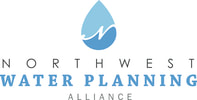|
The Illinois State Water Survey (ISWS) will be conducting a regional assessment of sandstone water levels throughout Northeastern Illinois starting on August 16, 2021 and extending into October. The goal of this project is to create a synopsis or “snapshot” of static and pumping water levels at high capacity municipal, industrial, and irrigation sandstone wells throughout a 12-county region. Specifically, the ISWS will visit high-capacity wells open to the St. Peter and Ironton-Galesville sandstones in Boone, Cook, DeKalb, DuPage, Grundy, Kane, Kendall, Lake, LaSalle, McHenry, Will, and Winnebago Counties.
The ISWS has historically only measured static water levels in sandstone wells during previous synoptic measurements (the last one completed in 2015), however recent research has indicated that understanding pumping levels and specific capacities of production wells is vital in understanding the long-term viability of the sandstone aquifers. In the coming weeks, the ISWS will be contacting municipalities, industries, and other entities with high-capacity wells to schedule a time to visit to take static (non-pumping water levels) at sandstone wells. The ISWS will ask how long it has been since the well ran and request that wells be off for at least an hour prior to taking a static reading. In addition, the ISWS is asking facilities to:
Capturing both static and pumping levels, along with the pumping rate that was occurring at the time of the pumping level measurement, will allow the ISWS to map areas of high and low specific capacities for the sandstone aquifers. This reporting will ultimately help communities to: 1) understand how sandstone levels are changing through time, 2) understand how productivity varies among sandstone wells, and 3) ensure the long-term viability of the sandstone aquifers in the region. If facilities have questions prior to the start of this project, please contact one of the following hydrogeologists at the ISWS: Daniel Hadley [email protected] 217-300-0402 Daniel Abrams [email protected] 217-244-1520 |
ABOUTThe latest updates page features posts about issues affecting NWPA member communities and best practices, drawing on interviews and conversations with experts. Archives
July 2024
Categories
All
|
